The Well-Tempered Ear
Brrr! It’s time to hear the ‘Polar Vortex’ aria
10 Comments
PLEASE HELP THE EAR. IF YOU LIKE A CERTAIN BLOG POST, SPREAD THE WORD. FORWARD A LINK TO IT OR, SHARE IT or TAG IT (not just “Like” it) ON FACEBOOK. Performers can use the extra exposure to draw potential audience members to an event. And you might even attract new readers and subscribers to the blog.
By Jacob Stockinger
We in the Upper Midwest — like much of the rest of the United States down to the Gulf of Mexico — have been treated to an Arctic gift from Canada for the next week or so.
It is called the Polar Vortex (below).
As you can see if you look closely or enlarge the diagram, the vortex has dropped way south from the North Pole, bringing with it way-below average temperatures, many of them going into the double digits below zero. And that doesn’t even include wind chill. (China has also been experiencing recording-breaking extreme cold.)
So it seemed only reasonable to see how a composer has expressed such extreme cold in a piece of vocal music — especially as the cold weather might seriously affect the Republican presidential caucuses that get started tomorrow in Iowa.
So here — complete with lyrics by the famous English writer John Dryden — is “The Cold Song” from 1691 opera “King Arthur” by the British baroque composer Henry Purcell (below), who did a terrific job of word painting and sound painting.
The Ear calls it the “Polar Vortex” aria. Officially its title is “What Power Art Thou Who From Below” and is sung by a character called The Cold Genius.
In the YouTube video below it is interpreted by the world-renowned countertenor Andreas Scholl (below) who is accompanied by the highly praised period-instrument early musical ensemble Accademia Byzantina under director Stefan Montenari.
The quivering repetitive rhythm you see in the notes duplicates shivering as a kind of extreme vibrato.
It is a literally chilling performance.
If you follow the words, the lyrics add to the sense of being stuck in a deep freeze.
How well do you think the imaginative song captures the extreme cold of The Polar Vortex?
The Ear wants to hear.
Tags: #BlogPost, #BlogPosting, #CountertenorSinger, #FacebookPost, #FacebookPosting, #World-Renowned, #YouTubevideo, Accademia Bizantina, acclaim, affect, Andreas Scholl, Android, Apple, Arctic, Arts, Asia, asian, Baroque, below-average, blog, British, Brrr!, Canada, Canadian, caucus, Chamber music, chilling, China, Chinese, choral music, Classical music, cold, composer, Concert, countertenor, diagram, duplicate, Early music, English, express, extreme, Facebook, freeze, frostbite, genius, gift, Great Britain, Great Plains, Gulf, Gulf of Mexico, Henry Purcell, Iowa, Italian, Italy, Jacob Stockinger, John Dryden, link, listen, literally, lyrics, Madison, Mexico, Michigan, Midwest, Minnesota, Montana, Music, Nebraska, North Pole, notes, official, opera, Orchestra, OS, OS systen, performance, piece, Polar Vortex, pole, power, praise, President, presidential, quivering, reasonable, renowned, repetitive, Republican, rest, rhythm, share, shiver, shivering, singer, song, Sound, sound painting, subzero, tag, temperature, The Ear, time, title, tomorrow, treat, U.S., UK, United States, upper Midwest, vibrato, vocal music, weather, week, winter, Wisconsin, word, word painting, world, YouTube, zero
Classical music: Famed opera diva Kiri Te Kanawa says she will not be singing in public anymore
Leave a Comment
By Jacob Stockinger
It happened a year ago.
But since then Dame Kiri Te Kanawa (below), the celebrated soprano and opera diva, has kept her insight to herself: She would not sing again in any kind of public performance.
She is 73, so the news is not surprising.
But it is disappointing.
Much as The Ear admires superstar soprano Renée Fleming, he preferred Te Kanawa’s tone, phrasing and vibrato. He particularly liked her voice in operas and other music by Mozart, Puccini and Richard Strauss. (You can hear her in her prime singing the aria “O mio babbino caro” by Puccini in the YouTube video at the bottom.)
But whatever your preference, seeing such a career come to an end is a sad milestone, however inevitable.
Perhaps the best story about the New Zealand artist’s retirement that The Ear has seen came in The Guardian. Here is a link:
And here is a column about retirement in various fields, including professional sports, that praises Te Kanawa’s decision and timing:
https://www.theguardian.com/commentisfree/2017/sep/13/kiri-te-kanawa-bowed-out
Tags: aria, Arts, BBC, Classical music, column, Compact Disc, Diana, diva, insight, Jacob Stockinger, Kiri Te Kanawa, Mozart, Music, New Zealand, news, O mio bambino caro, opera, Orchestra, performance, phrase, phrasing, Princess Diana, Princess of Wales, professional, public, Puccini, Renée Fleming, Retirement, Richard Strauss, Royal Opera House, singer, Singing, song, soprano, sportd, Sports, superstar, The Guardian, The Marriage of Figaro, tone, United States, University of Wisconsin-Madison School of Music, University of Wisconsin–Madison, vibrato, voice, Wolfgang Amadeus Mozart, YouTube
Classical music: The 14th annual Wisconsin Flute Festival takes place this Saturday and offers a FREE concert at 5 p.m. Plus, a FREE recital of French flute music is this Friday at noon
3 Comments
ALERT: This week’s FREE Friday Noon Musicale, at the First Unitarian Society of Madison, 900 University Bay Drive, will feature flutist Iva Ugrčić, flute and pianist Kyle Johnson performing an all-French program of music by Francis Poulenc, Olivier Messiaen, Claude Debussy and Jules Bouquet. The concert runs from 12:15 to 1 p.m.
By Jacob Stockinger
The Ear has received the following information to post:
The 14th annual Wisconsin Flute Festival will take place this coming Saturday, March 4.
The Wisconsin Flute Festival brings together flutists and music lovers of all ages from Wisconsin and the greater Midwest.
The day’s events include workshops, performances, youth and collegiate competitions, a master class, and a 2,300-plus square foot exhibition hall with purveyors of fine flutes, music and accessories.
This year’s Festival will feature guest artist Lorna McGhee (below), principal flute of the Pittsburgh Symphony Orchestra and Artist Lecturer in Flute at Carnegie Mellon University.
The 14th annual Wisconsin Flute Festival will begin at 8 a.m. in the Pyle Center at UW-Madison and will culminate in a FREE public concert beginning at 5 p.m. in Mills Concert Hall, in the Mosse Humanities Building, at UW-Madison.
This concert, “Landscapes and Love Songs,” will be performed by featured guest artist Lorna McGhee. (Sorry, The Ear has no details on the program.)
This year, an expanded variety of workshops and performances will be offered. Workshop topics will include circular breathing, articulation and vibrato, in addition to sessions on maximizing practice time, musicians’ health and interpreting musical pieces.
Participants will also have the opportunity to experience an interactive session with low flutes including; alto flutes, bass flutes and a contrabass flute (below).
Performances during the day will feature: electro-acoustic music; Telemann (below top) on historical flutes; lesser-known modern masters; Romanian composers; Latin music; Bach (below bottom) transcriptions; contemporary interpretation; and works for flute, clarinet and voice. Student soloists and chamber ensembles from UW-Whitewater and UW-Madison will present concerts.
For flutists shopping for an instrument, music or accessories, over a dozen companies and organizations from across the US will be on-site in the Festival’s exhibit hall. Technicians will be also available to evaluate instruments and conduct minor repairs.
Exhibitors include Altus Flutes, Atlantic Crossing Records, Brannen Brothers Flutemakers, Inc., Burkart Flutes & Piccolos, Di Zhao Flutes, Flute Center of New York, Flute Specialists, Flute World, Heid Music, The National Flute Association, Ward-Brodt, White House of Music and Wisconsin Youth Symphony Orchestras.
Tickets are $20 to $35 for Festival participants. Tickets for non-flutist family members of participants (parents, siblings) are available for at a special rate of $5. Registration information is available online at wisconsinflutefestival.org. Tickets can be purchased at the Festival.
The evening concert beginning at 5 p.m. in Mills Hall, is FREE and OPEN TO THE PUBLIC.
The Wisconsin Flute Festival is a program of the Madison Flute Club.
About the Madison Flute Club
The Madison Flute Club was founded in 2002 and currently presents over 20 concerts each year to an audience of more than 1,500 community members. The club involves, on average, 35 active adult members and over 30 youth from the surrounding area.
To advance and achieve its mission, the Madison Flute Club has undertaken several large projects and partnered with numerous organizations and events in Dane County.
These projects include the commissioning and world premiere of a work for flute choir for Design MMoCA, successfully fundraising for a contrabass flute (the first such instrument in Wisconsin) and performing at the National Flute Association Convention.
Madison Flute Club ensembles and members have been featured on Wisconsin Public Radio’s The Midday with Norman Gilliland, WORT 89.9FM Madison and in the publication The Flutist Quarterly.
The 2017 Wisconsin Flute Festival is co-hosted by Madison Flute Club and UW-Madison Flute Studio.
Major funding is provided by: Heid Music, American Printing Company, Eric and Tobi Breisach, Distillery Marketing and Design, Karl Sandelin in honor of Joyce Sandelin and Wisconsin Youth Symphony Orchestras.
Additional funding is provided by Altus Handmade Flutes, Breisach Cordell PLLC, and Dane Arts with additional funds from the Endres Mfg. Company Foundation, The Evjue Foundation, Inc., charitable arm of The Capital Times, the W. Jerome Frautschi Foundation and the Pleasant T. Rowland Foundation.
Tags: accessories, acoustic, alto, articulation, Arts, Bach, Baroque, bass, breathing, Carnegie Mellon University, Chamber music, choral music, circular breathing, clarinet, Classical music, composer, contrabass, Dane Arts, Debussy, Early music, Electronic music, Evjue Foundation, exhibition hall, First Unitarian Society of Madison, flute, Health, interpretation, Jacob Stockinger, Johann Sebastian Bach, Jules Bouquet, landscape, Latin, lecturer, Lorna McGhee, love song, Madison, Madison Flute Club, master class, Messiaen, Mozart, Music, New York, Norman Gilliland, Orchestra, Piano, Pittsburgh Symphony Orchestra, Pleasant T. Rowland, Poulenc, practice, Romania, Sonata, The Capital Times, transcription, United States, University of Wisconsin-Madison School of Music, University of Wisconsin–Madison, UW-Whitewater, vibrato, vocal music, voice, Wisconsin, wisconsin public radio, Wisconsin Youth Symphony Orchestras, workshop, WORT-FM 89.9, YouTube
Classical music: The amateur Middleton Community Orchestra brings its fifth season to an impressively brassy close
2 Comments
By Jacob Stockinger
Here is a special posting, a review written by frequent guest critic and writer for this blog, John W. Barker. Barker (below) is an emeritus professor of Medieval history at the University of Wisconsin-Madison. He also is a well-known classical music critic who writes for Isthmus and the American Record Guide, and who for 12 years hosted an early music show every other Sunday morning on WORT FM 89.9 FM. He serves on the Board of Advisors for the Madison Early Music Festival and frequently gives pre-concert lectures in Madison. He also took the performance photos.
By John W. Barker
The mostly amateur Middleton Community Orchestra (below) finished its fifth season with a concert on Wednesday night that was a kind of brass sandwich—that is, a brass filling between two noisy slices of bread.
The opener was the popular “Carnival” Overture by Antonin Dvorak, the closest this composer ever came to producing a cheap crowd-pleaser.
(I wish that the enterprising conductor Steve Kurr (below), had chosen instead one of the other two overtures in Dvorak’s trilogy of “Nature, Life and Love,” which are much more substantial.)
The orchestra gave the overture a lusty performance, revealing some interesting wind details that one does not often hear.
There were two sandwich fillers.
The first was a concerto for tuba, dating from 2015. The composer, local musician and University of Wisconsin-Madison School of Music alumnus Pat Doty (below), was also the soloist.
Of its three movements, the first was clearly in the idiom of music for marching band, in which Doty has had long UW experience. The second movement was an attempt at a waltz, while the finale had Latin American odors and featured a prominent part for marimba. What to say? The program bio made the sensible point that Doty’s music “never takes itself too seriously.”
A more substantial score was the other filling, the Concerto for Horn and Orchestra, Op. 91, by Russian late-Romantic Reinhold Glière, also in three movements. (Sadly, the program booklet failed to list the movements for each concerto.)
While this score may not be really great music, it is a splendid, if difficult, vehicle for the soloist.
Another UW-Madison grad, Paul Litterio (below), a player in many area orchestras including both the Madison Symphony Orchestra and the Wisconsin Chamber Orchestra (and with a sideline in handbells), was the soloist. Playing with perfect technique, an elegant style and just a touch of teasing vibrato, Litterio gave a fascinating demonstration of his instrument in a solo capacity that we do not often hear.
The closing bread for the sandwich was another example of near-vulgar bombast by one of its masters: Tchaikovsky (below). If that was the kind of music to be written, he was the one to do it, and still make you admire him.
The Capriccio Italien, Op. 40, was the composer’s reaction to a visit to Rome. He evoked his neighborhood and, above all, the riotous sounds and songs of a Roman Carnival. (You can hear it in the YouTube video at the bottom.)
Tchaikovsky’s capacity for making bombast sound like fun creates a really delightful score, and the Middleton players poured all their energies into it.
(An interesting footnote: Tchaikovsky’s other musical product of his visits to Italy is a very different work, the gorgeous string sextet Souvenir de Florence (Memory of Florence), which is less about Italy itself and more a picture of the composer’s homesickness. As it happens, that masterpiece will be played on July 8 by the Willy Street Chamber Players.)
Tags: amateur, American Record Guide, Arts, band, biography, bombast, brass, brass instruments, bread, Capriccio Italien, Carnival Overture, Classical music, concerto, critic, Dvorak, History, Horn, Isthmus, Jacob Stockinger, John W. Barker, July, Latin America, life, Love, Madison Early Music Festival, Madison Symphony Orchestra, marching band, marimba, Medieval history, MEMF, Middleton Community Orchestra, movement, nature, noise, Orchestra, Overture, percussion, program notes, Reinhold Gliere, review, sandwich, score, solo, soloist, songs, Souvenir de Florence, style, symphony, Tchaikovsky, technique, trilogy, Tuba, United States, University of Wisconsin-Madison School of Music, University of Wisconsin–Madison, vibrato, vulgar, Waltz, Willy Street Chamber Players, wind instruments, winds, Wisconsin, Wisconsin Chamber Orchestra, WORT-FM 89.9, YouTube
Classical music: Here are the Top 10 things to know about Handel’s “Messiah.” The Madison Bach Musicians will perform it with period instruments this Friday night and Sunday afternoon.
2 Comments
ALERT: Tomorrow on Tuesday, April 5, there will be two on-air events about the Madison Bach Musicians’ performances of Handel’s “Messiah”: On Wisconsin Public Radio’s Midday program on WERN (88.7 FM) noon-12:30 p.m., MBM director Trevor Stephenson will be Norman Gilliland’s guest. They’ll play and discuss selections from “Messiah.” Then MBM will perform two arias from “Messiah” live on the CBS affiliate WISC-TV Channel 3 “Live at 4” program 4-5 p.m.
By Jacob Stockinger
This coming Friday night and Sunday afternoon, the Madison Bach Musicians will perform the well-known oratorio “Messiah” by George Frideric Handel (below). The performances feature period instruments and historically authentic performances practices.
Here are the details:
FRIDAY: 6:45 p.m. lecture followed by a 7:30 p.m. concert
SUNDAY: 2:45 p.m. lecture followed by a 3:30 p.m. concert
Both performances are at the First Congregational United Church of Christ (below), 1609 University Avenue, Madison, near Camp Randall Stadium.
The forces and period instruments MBM has assembled for this event are similar in many respects to those used by Handel in the world premiere of “Messiah” in Dublin in April of 1742.
For more information, including a complete list of performers, visit:
http://madisonbachmusicians.org/april-8-10-2016/
The concerts feature an all-baroque orchestra ─ with gut strings, baroque oboes, natural trumpets and calf-skin timpani ─ plus eight internationally-acclaimed soloists, and the Madison Boychoir (part of Madison Youth Choirs), which will collaborate in the “Hallelujah” Chorus and Amen, under the direction of early-music specialist Marc Vallon (below, in a photo by James Gill), professor of bassoon at the University of Wisocnsin-Maidson School of Music.
Pre-concert lectures at both events will be given by MBM founder and artistic director Trevor Stephenson (below), who is as entertaining as he is enlightening.
Advance-sale discount tickets are: $33 general, $28 students and seniors (65+). They are available at Orange Tree Imports, Farley’s House of Pianos, Room of One’s Own, and Willy Street Co-op (East and West)
You can also buy advance sale tickets online at www.madisonbachmusicians.org
Tickets at the door are $35 general, $30 students and seniors (65+), Student Rush: $10 on sale 30 minutes before lecture (student ID required) Visit or call www.madisonbachmusicians.org at 608 238-6092.
To prepare you to appreciate the oratorio, here is Trevor Stephenson’s Top 10 list of things – a la David Letterman — that you should know about it:
TOP 10 THINGS TO KNOW ABOUT HANDEL’S ‘MESSIAH‘
#10. Its title is “Messiah” not “The Messiah”
#9. Handel, at 56 years of age, wrote Messiah in just 24 days in the late summer of 1741.
#8. Some of the pieces ─ like “For unto us a child is born” and “All we like sheep” ─ Handel borrowed or adapted from pieces he had composed earlier, usually by laying the new text over the existing musical material. This technique, known as “parody,” was employed by most composers as a way of recycling good musical material.
#7. The original words to the tune we know as “For unto us a child is born” were (Italian) “No, di voi non vo’ fidarmi, cieco Amor, crudel Beltà” — meaning roughly “No, I won’t trust you, blind Love, cruel Beauty” (Hear the YouTube video at bottom.)
#6. Messiah premiered in 1742 in Dublin, Ireland two weeks after Easter (March 25 that year) on April 13. By uncanny dumb luck, this 2016 period-performance of Messiah by MBM will also take place two weeks after Easter (March 27) on April 8 and 10.
#5. Handel divided this oratorio into three parts. Part I: a world in need of salvation; the promise that salvation is on the way; arrival of the savior in the world; Part II: Christ’s passion and crucifixion, descent to hell and resurrection, beginnings of the church, triumph of truth over death (Hallelujah); Part III: Faith and the world to come; the awakening of all souls (The Trumpet Shall Sound), paean to the Lamb of God; closing, majestic meditation on Amen.
#4. In a baroque orchestra the string instruments use gut strings—made from dried and carefully processed sheep intestine. Gut strings assist in the performance of baroque music in two important ways: 1) because gut as a material is very supple, the tone it produces is naturally “warm” in an acoustic/aesthetic sense; therefore, vibrato is not necessary in order to produce a pleasing sound and the player’s attention can focus more on pitch. 2) Gut strings, because they are very textured, produce a natural friction with the hair of the baroque bow which ensures that the instant the player’s bow hand moves the pitch is in the air. This optimizes the sense of directness in performance.
#3. The harpsichord and organ were used as continuo instruments in baroque music. MBM will be using both instruments in the upcoming Messiah performances. 18th-century keyboard tunings were generally of the un-equal/circulating variety known as Well Temperaments, as in “The Well-Tempered Clavier” of Johann Sebastian Bach. In these tunings, every tonality has a unique acoustic color, ranging from the transparently clear and harmonious keys (C major, A minor and other keys near the top of the circle of fifth, unencumbered by accidentals), then shading all the way down to the lugubriously opaque and gnarled keys in the basement of the circle of fifths, like G-flat major and E-flat minor. Notice in Messiah the contrast between the acoustical openness of the initial Sinfonia in E minor (one sharp) and the rigid density of the passion-of-Christ choruses near the beginning of Part II, “Surely, He hath borne our griefs” and “And with His stripes we are healed” both in F minor (four flats). 18th-century temperament will bring such differences into keen relief.
#2. Messiah was very successful and greatly admired in Dublin at its premiere. When Handel led performances of it in London several months later, the reception was much cooler. Nevertheless, from there on the popularity of Messiah grew steadily and it was performed often in Handel’s lifetime under his direction. Though much of Handel’s music was widely published in his lifetime, Messiah was not published until a few years after Handel’s death in 1759.
#1. In Messiah, the balance between the sense of play and sense of purpose is unrivalled (though a different animal in many ways, a blood brother of Messiah in the movie domain might be The Wizard of Oz). Indeed, it is almost as if in Handel’s world, these two elements — play and purpose — do not oppose, but rather fuel each other. Handel’s descendent in this regard is Wolfgang Amadeus Mozart, whose also could consistently fuse melodic joy with harmonic and theatrical pacing, pushing scene after scene ever-higher until it seems the roof opens to the realms of limitless joy.
Tags: Amen, Arts, Bach, Baroque, Bassoon, CBS, Cello, Channel 3, choral music, Christ, church, Classical music, concerto, crucifixion, David Letterman, Dublin, Early music, Easter, George Frideric Handel, God, gut strings, Hallelujah Chorus, harpsichord, historically informed performance practices, Ireland, Jacob Stockinger, Jesus, Johann Sebastian Bach, Madison, Madison Bach Musicians, Madison Boychoir, Madison Youth Choirs, Marc Vallon, Messiah, Messiah Part II, Midday, Mozart, noon, Norma Gilliland, Oboe, Orchestra, Passion, period instruments, Piano, salvation, savior, strings, symphony, temperament, The Well-Tempered Clavier, timpani, Trevor Stephenson, Trumpet, trumpets, tuning, United States, University of Wisconsin-Madison School of Music, University of Wisconsin–Madison, vibrato, Viola, Violin, vocal music, Well-Tempered Clavier, WERN-FM 88.7, WISC, Wisconsin, wisconsin public radio, Wizard of Oz, Wolfgang Amadeus Mozart, YouTube
- May 2024
- April 2024
- March 2024
- February 2024
- January 2024
- December 2023
- November 2023
- October 2023
- September 2023
- August 2023
- July 2023
- June 2023
- May 2023
- April 2023
- March 2023
- February 2023
- January 2023
- December 2022
- October 2022
- September 2022
- June 2022
- May 2022
- April 2022
- March 2022
- July 2021
- June 2021
- May 2021
- April 2021
- March 2021
- February 2021
- January 2021
- December 2020
- November 2020
- October 2020
- September 2020
- August 2020
- July 2020
- June 2020
- May 2020
- April 2020
- March 2020
- February 2020
- January 2020
- December 2019
- November 2019
- October 2019
- September 2019
- August 2019
- July 2019
- June 2019
- May 2019
- April 2019
- March 2019
- February 2019
- January 2019
- December 2018
- November 2018
- October 2018
- September 2018
- August 2018
- July 2018
- June 2018
- May 2018
- April 2018
- March 2018
- February 2018
- January 2018
- December 2017
- November 2017
- October 2017
- September 2017
- August 2017
- July 2017
- June 2017
- May 2017
- April 2017
- March 2017
- February 2017
- January 2017
- December 2016
- November 2016
- October 2016
- September 2016
- August 2016
- July 2016
- June 2016
- May 2016
- April 2016
- March 2016
- February 2016
- January 2016
- December 2015
- November 2015
- October 2015
- September 2015
- August 2015
- July 2015
- June 2015
- May 2015
- April 2015
- March 2015
- February 2015
- January 2015
- December 2014
- November 2014
- October 2014
- September 2014
- August 2014
- July 2014
- June 2014
- May 2014
- April 2014
- March 2014
- February 2014
- January 2014
- December 2013
- November 2013
- October 2013
- September 2013
- August 2013
- July 2013
- June 2013
- May 2013
- April 2013
- March 2013
- February 2013
- January 2013
- December 2012
- November 2012
- October 2012
- September 2012
- August 2012
- July 2012
- June 2012
- May 2012
- April 2012
- March 2012
- February 2012
- January 2012
- December 2011
- November 2011
- October 2011
- September 2011
- August 2011
- July 2011
- June 2011
- May 2011
- April 2011
- March 2011
- February 2011
- January 2011
- December 2010
- November 2010
- October 2010
- September 2010
- August 2010
- July 2010
- June 2010
- May 2010
- April 2010
- March 2010
- February 2010
- January 2010
- December 2009
- November 2009
- October 2009
- September 2009
- August 2009
Archives
- 2,491,279 hits
Blog Stats
Recent Comments
| Brian Jefferies on Classical music: A major reass… | |
| welltemperedear on What made Beethoven sick and… | |
| rlhess5d5b7e5dff on What made Beethoven sick and… | |
| welltemperedear on Beethoven’s Ninth turns 200… | |
| Robert Graebner on Beethoven’s Ninth turns 200… |
Tags
#BlogPost #BlogPosting #ChamberMusic #FacebookPost #FacebookPosting #MeadWitterSchoolofMusic #TheEar #UniversityofWisconsin-Madison #YouTubevideo Arts audience Bach Baroque Beethoven blog Cello Chamber music choral music Classical music Compact Disc composer Concert concerto conductor Early music Facebook forward Franz Schubert George Frideric Handel Jacob Stockinger Johannes Brahms Johann Sebastian Bach John DeMain like link Ludwig van Beethoven Madison Madison Opera Madison Symphony Orchestra Mead Witter School of Music Mozart Music New Music New York City NPR opera Orchestra Overture Center performer Pianist Piano post posting program share singer Sonata song soprano String quartet Student symphony tag The Ear United States University of Wisconsin-Madison School of Music University of Wisconsin–Madison Viola Violin vocal music Wisconsin Wisconsin Chamber Orchestra wisconsin public radio Wolfgang Amadeus Mozart YouTube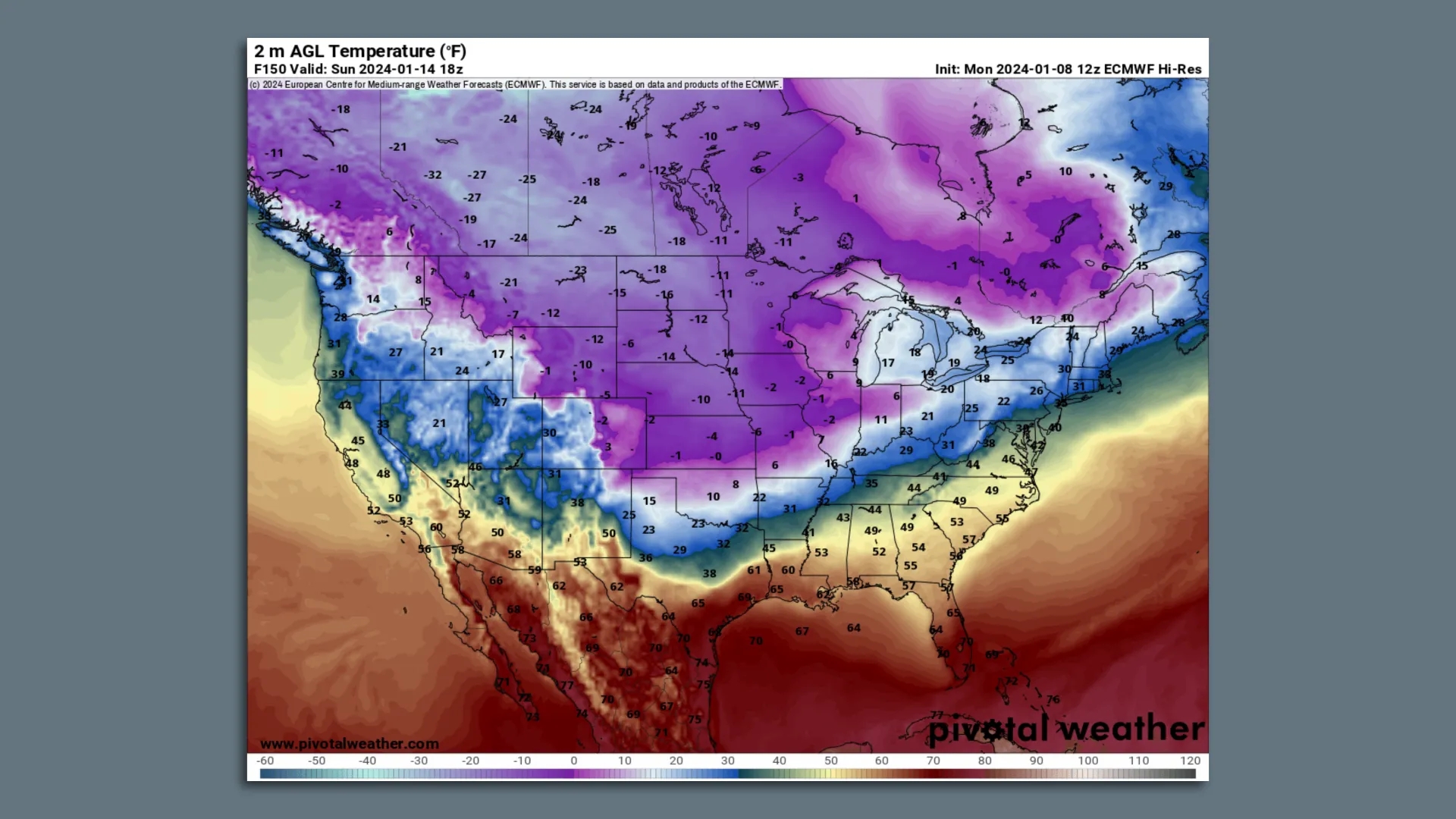





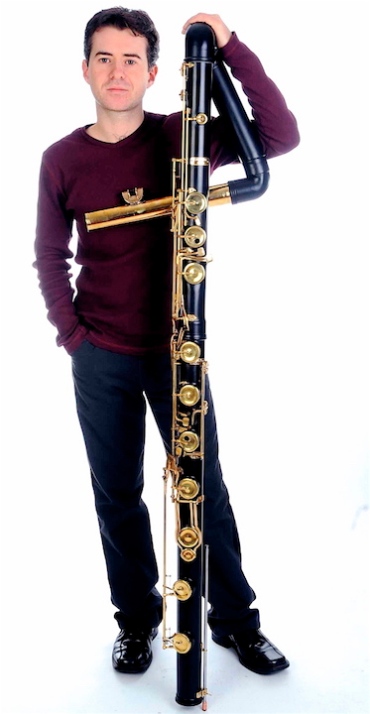


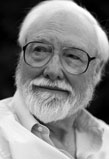
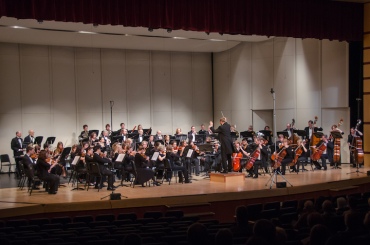



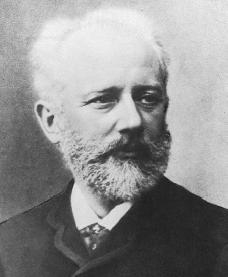
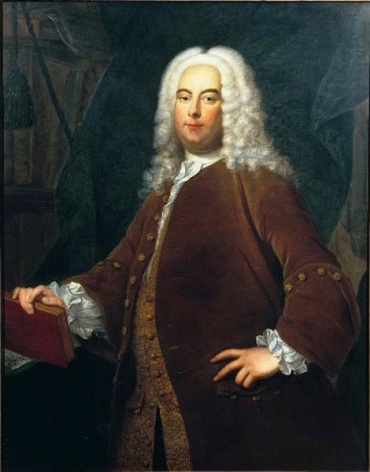

![Marc Vallon 2011 James Gill (baroque & modern)[2]](https://welltempered.files.wordpress.com/2012/03/marc-vallon-2011-james-gill-baroque-modern2.jpg?w=370)

